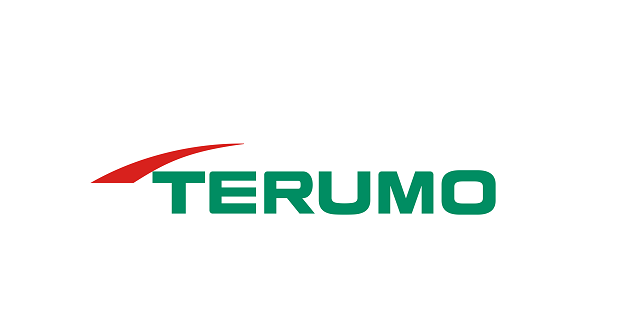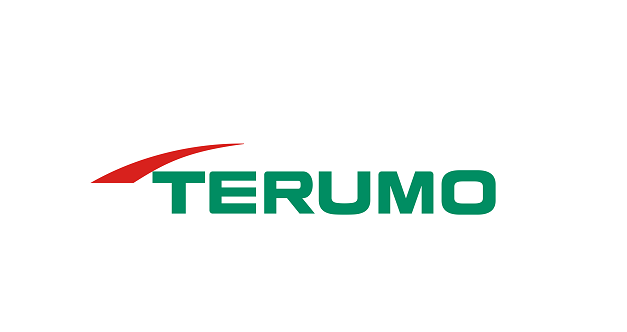FREQUENTLY ASKED QUESTIONS
GENERAL OVERVIEW AND FUNCTIONALITY
What Is ePRISM and How Does It Work?
ePRISM is an advanced clinical decision support software platform designed to integrate seamlessly with your Electronic Health Records (EHR) system. It uses predictive analytics to provide real-time insights into patient risk factors, supporting clinicians to make informed decisions that help to enhance patient care and operational efficiency.
What Does ePRISM Stand For?
ePRISM stands for Patient Risk Information Services Manager. It reflects the platform’s core function of providing real-time, actionable risk information to healthcare providers, helping them to optimize patient care and outcomes.
How Does ePRISM Utilize Predictive Analytics in Healthcare?
ePRISM employs predictive analytics to assess patient data and identify those at risk for complications, such as contrast-induced acute kidney injury. By providing clinicians with early warnings and actionable insights, ePRISM supports proactive intervention, helping to reduce complications and improve patient outcomes.
Can ePRISM Handle Large Data Volumes?
Yes, ePRISM is designed to efficiently manage and analyze large volumes of data. Leveraging advanced algorithms and scalable cloud-based architecture, ePRISM processes extensive datasets quickly and accurately. This capability ensures that healthcare providers receive timely and actionable insights, helping them to make informed decisions based on comprehensive data analysis. Whether dealing with high patient throughput or complex data sets, ePRISM is equipped to handle the demands of modern healthcare environments.
How Does ePRISM Integrate with Existing Healthcare Systems?
ePRISM integrates seamlessly with existing EHR systems, allowing for easy implementation and minimal disruption to current workflows. Its compatibility with various healthcare platforms ensures that facilities can quickly adopt and benefit from ePRISM's advanced analytics and decision support capabilities.
What is the Role of Healthcare Providers in Using ePRISM?
While ePRISM leverages algorithms to recommend next steps for treatments and indicate potential problems, the clinical decisions regarding patient care remain solely with healthcare providers. ePRISM serves as a tool to support efficiency and help to facilitate the work of healthcare providers by analyzing data from the EHR and other sources. Ultimately, it is up to the clinicians to determine the appropriate course of action based on the information provided by the CDS.
What Types of Healthcare Facilities Can Benefit from ePRISM?
ePRISM is suitable for a wide range of healthcare facilities, including hospitals, outpatient centers, and specialty clinics. Its flexible design and advanced analytics make it an ideal solution for any institution looking to enhance patient care, improve operational efficiency, and achieve cost savings.
Is ePRISM Limited to Cardiology, or Can It Be Used in Other Specialties?
While ePRISM is specifically designed to excel in cardiovascular care, its advanced clinical decision support capabilities can be extended to other medical specialties. The platform's predictive analytics and workflow optimization features are versatile and adaptable, making them suitable for various healthcare settings. We are open to partnering with healthcare providers and organizations to expand ePRISM's capabilities beyond cardiology, enabling it to support a broader range of clinical applications and help to improve patient outcomes across different specialties.
CLINICAL APPLICATIONS AND BENEFITS
What Are the Clinical Applications of THO and the ePRISM Platform?
ePRISM is designed to support a wide range of clinical applications, primarily focusing on enhancing cardiovascular care. Its key applications include:
- Risk Assessment: ePRISM provides clinicians with predictive insights to identify patients at risk for complications such as contrast-induced acute kidney injury, assisting with proactive interventions.
- Care Pathway Optimization: Our team of clinical experts can help enhance care pathways, improving clinical outcomes and operational efficiency by optimizing scheduling, staffing, and resource allocation.
- Procedure Management: ePRISM assists in managing complex cardiovascular procedures by providing evidence-based recommendations and best practices, supporting high-quality care delivery.
- Quality Improvement: By analyzing data from EHRs and other sources, ePRISM identifies opportunities for improving patient safety, which can reduce readmissions and help to support overall care quality.
- Cost Reduction: ePRISM supports cost-effective healthcare delivery by helping to minimize complications, reduce hospital length of stay, and promote same-day discharges where appropriate.
These clinical applications make THO & ePRISM a valuable solution for healthcare providers seeking to improve patient outcomes, streamline operations, and achieve cost savings in the rapidly evolving healthcare landscape.
How Does ePRISM Differentiate Itself from Other Clinical Decision Support Solutions?
ePRISM is unique due to its use of real-time predictive analytics to provide actionable insights directly integrated with your EHR system. Unlike traditional retrospective analytics, ePRISM offers prospective analysis, assisting clinicians to identify at-risk patients early and optimize care pathways, leading to reduced hospital stays and improved patient outcomes.
How Can ePRISM Enhance Patient Outcomes and Operational Efficiency?
ePRISM assists with patient outcomes by using predictive analytics to customize care pathways tailored to individual patient needs. It helps to improve operational efficiency through better scheduling and staffing, which can reduce readmissions, and streamline workflows. This leads to higher patient satisfaction and more efficient resource management, ultimately lowering healthcare costs.
How Does THO & ePRISM Support Transradial Access and Same-Day Discharge Programs?
THO/ePRISM provides critical insights that optimize the use of transradial access techniques, assisting with patient selection, preparation, and discharge processes. By implementing best practices and standardized care pathways, ePRISM helps to facilitate same-day discharges, which are proven to improve patient satisfaction and reduce costs, aligning with contemporary healthcare payment models.
How Does ePRISM Support Healthcare Risk Assessments?
ePRISM provides comprehensive healthcare risk assessment recommendations that help identify high-risk patients. These recommendations assist healthcare providers to create customized treatment plans, ensuring each patient receives the most appropriate care based on their unique risk profile, thus improving safety and efficiency.
Can ePRISM Help Reduce Hospital Length of Stay?
Yes, ePRISM is designed to help reduce hospital length of stay by optimizing patient management and discharge processes. By identifying risk factors early and implementing tailored care plans, ePRISM assists with timely interventions that prevent complications and expedite recovery.
How Does ePRISM Enhance Patient Satisfaction?
ePRISM helps improve patient satisfaction by providing personalized care pathways that address individual needs and help minimize hospital stays. By reducing complications and enhancing care coordination, patients experience better health outcomes and higher satisfaction with their healthcare providers.
OPERATIONAL EFFICIENCY AND FINANCIAL IMPACT
What are the Cost Benefits Associated with Implementing ePRISM?
Hospitals can utilize and leverage the advanced analytical support provided by ePRISM to help minimize complications and promote same-day discharges. This optimization results in significant cost savings and increased revenue capture, making ePRISM a cost-effective solution for healthcare providers aiming to improve financial performance.
What is the ROI of Implementing ePRISM in a Healthcare Facility?
Implementing ePRISM can lead to a substantial return on investment (ROI) through cost savings from reduced complications, shorter hospital stays, and increased operational efficiency. By optimizing resources and improving patient outcomes, ePRISM assists financial performance and care quality.
Why Choose Terumo Health Outcomes (THO) and ePRISM Over In-House Process Improvement Teams?
THO and the ePRISM platform offer a unique combination of consulting expertise and advanced software capabilities that complement in-house process improvement teams.
- THO Consulting Services: Our team provides specialized expertise in cardiovascular and radiology procedures, offering insights and recommendations that are tailored to your facility’s specific needs. With decades of experience, THO consultants work alongside your internal teams to implement best practices, optimize care pathways, and achieve measurable improvements in care quality and operational efficiency.
- ePRISM Software: The ePRISM platform delivers powerful algorithm-driven analytics and decision support recommendations and integrates seamlessly with your existing EHR systems. By providing real-time, data-driven insights, ePRISM supports clinical decision-making, helps to streamline operations, which can reduce hospital costs.
Together, THO and ePRISM provide comprehensive solutions that help to drive better patient outcomes and operational performance, making them an ideal choice for healthcare providers looking to maximize their potential beyond what internal teams can achieve alone.
SUPPORT AND TRAINING
What Support and Training Does THO Offer to Healthcare Providers using ePRISM?
THO offers comprehensive support and training to ensure healthcare providers can effectively utilize the platform. This includes onboarding assistance, care pathway optimization, ongoing technical support, and access to educational resources that help users maximize the benefits of the ePRISM clinical decision support platform.
What Initial Onboarding Support Does ePRISM Provide to New Users?
THO offers thorough onboarding support for new users, including training sessions, step-by-step tutorials, and detailed user guides. This onboarding process ensures that healthcare providers are fully equipped to use the platform's features and integrate it seamlessly into their existing workflows.
Is Ongoing Technical Support Available for ePRISM Users?
Yes, THO provides ongoing technical support to all ePRISM users. Our dedicated support team is available to assist with any technical issues, software updates, and system integration questions. This support ensures that users can continue to leverage ePRISM’s capabilities without disruption.
How Does ePRISM Support Customization for Specific Healthcare Facilities?
ePRISM can be customized to meet the unique needs of different healthcare facilities. Our support team works closely with your organization to tailor the platform’s features, reports, and dashboards to align with your specific operational goals and clinical requirements.
Can ePRISM Be Scaled and Adapted as Our Healthcare Facility Grows?
Absolutely. ePRISM is designed to scale with your healthcare facility as it grows. Our team provides ongoing support to ensure that the platform continues to meet your needs as you expand services, extend to additional facilities, or increase patient volume.
References:
Data on File



